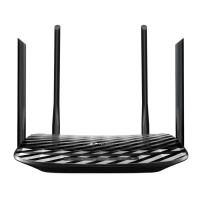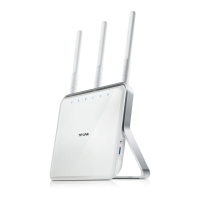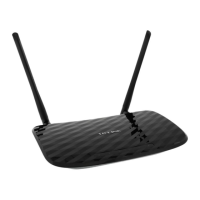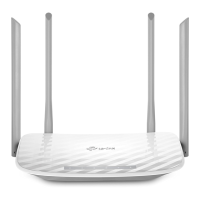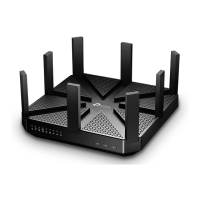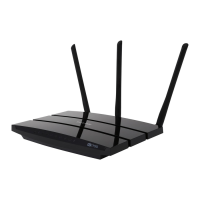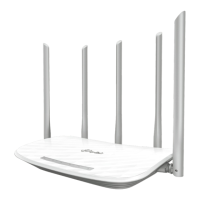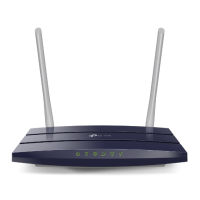76
Chapter 13
Customize Your Network Settings
In addition
• Mode - Select a transmission mode according to your wireless client devices. It is
recommended to just leave it as default.
• Channel Width - Select a channel width (bandwidth) for the wireless network.
• Channel - Select an operating channel for the wireless network. It is recommended
to leave the channel to Auto, if you are not experiencing the intermittent wireless
connection issue.
• Transmit Power - Select either High, Middle or Low to specify the data transmit power.
The default and recommended setting is High.
¾ To use the Airtime Fairness function
Airtime Fairness prevents the devices with older Wi-Fi standards from slowing down
your home network, improving overall Wi-Fi performance and reliability.
1. Go to Advanced > Wireless > Wireless Settings.
2. Select the 2.4GHz or 5GHz wireless network.
3. Enable Airtime Fairness.
4. Click Save.
¾ To use the Multi-User MIMO function
Multi-User MIMO (Multiple-Input Multiple-Output) enables the router to simultaneously
send data to multiple devices, significantly enhancing the network efficiency.
1. Go to Advanced > Wireless > Wireless Settings.
2. Select the 5GHz wireless network.
3. Enable Multi-User MIMO.
4. Click Save.
13. 7. Use WPS for Wireless Connection
Wi-Fi Protected Setup (WPS) provides an easier approach to set up a security-protected
Wi-Fi connection.
1. Visit http://tplinkwifi.net, and log in with your TP-Link ID or the password you set for
the router.
2. Go to Advanced > Wireless > WPS.
13. 7. 1. Set the Router’s PIN
Router’s PIN is enabled by default to allow wireless devices to connect to the router
using the PIN. You can use the default one or generate a new one.
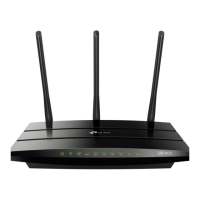
